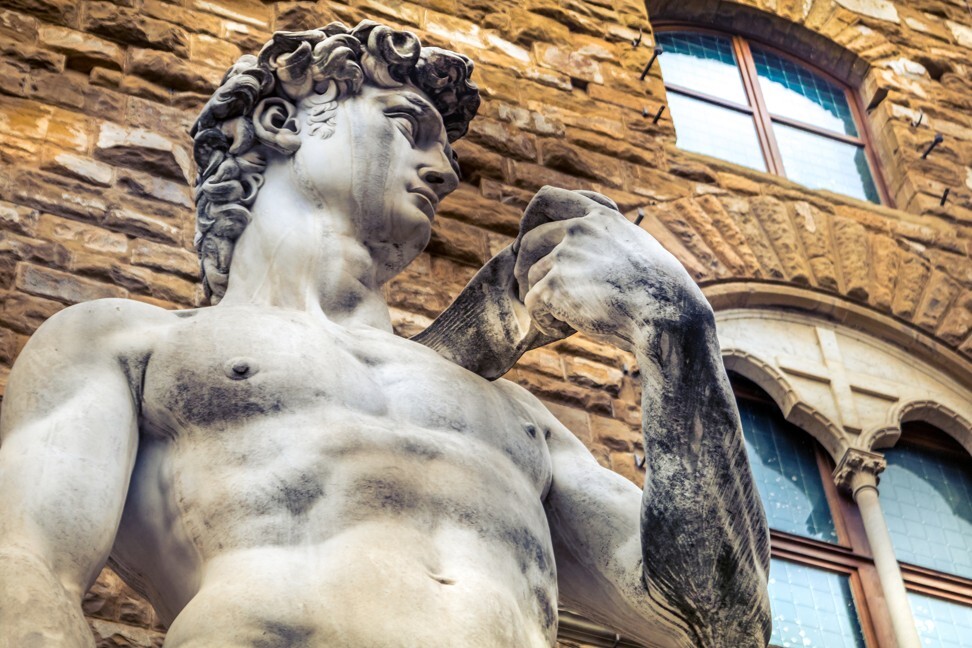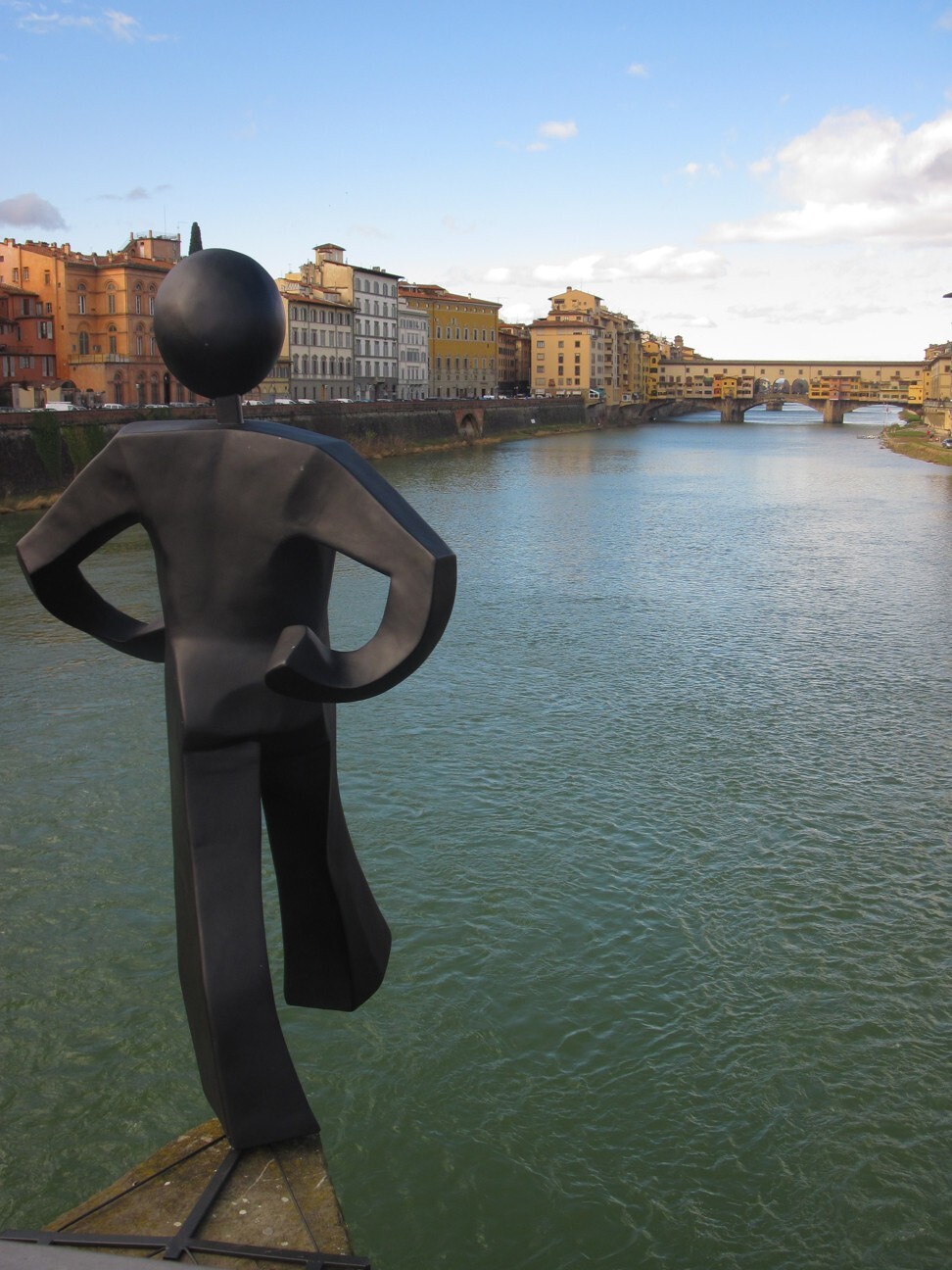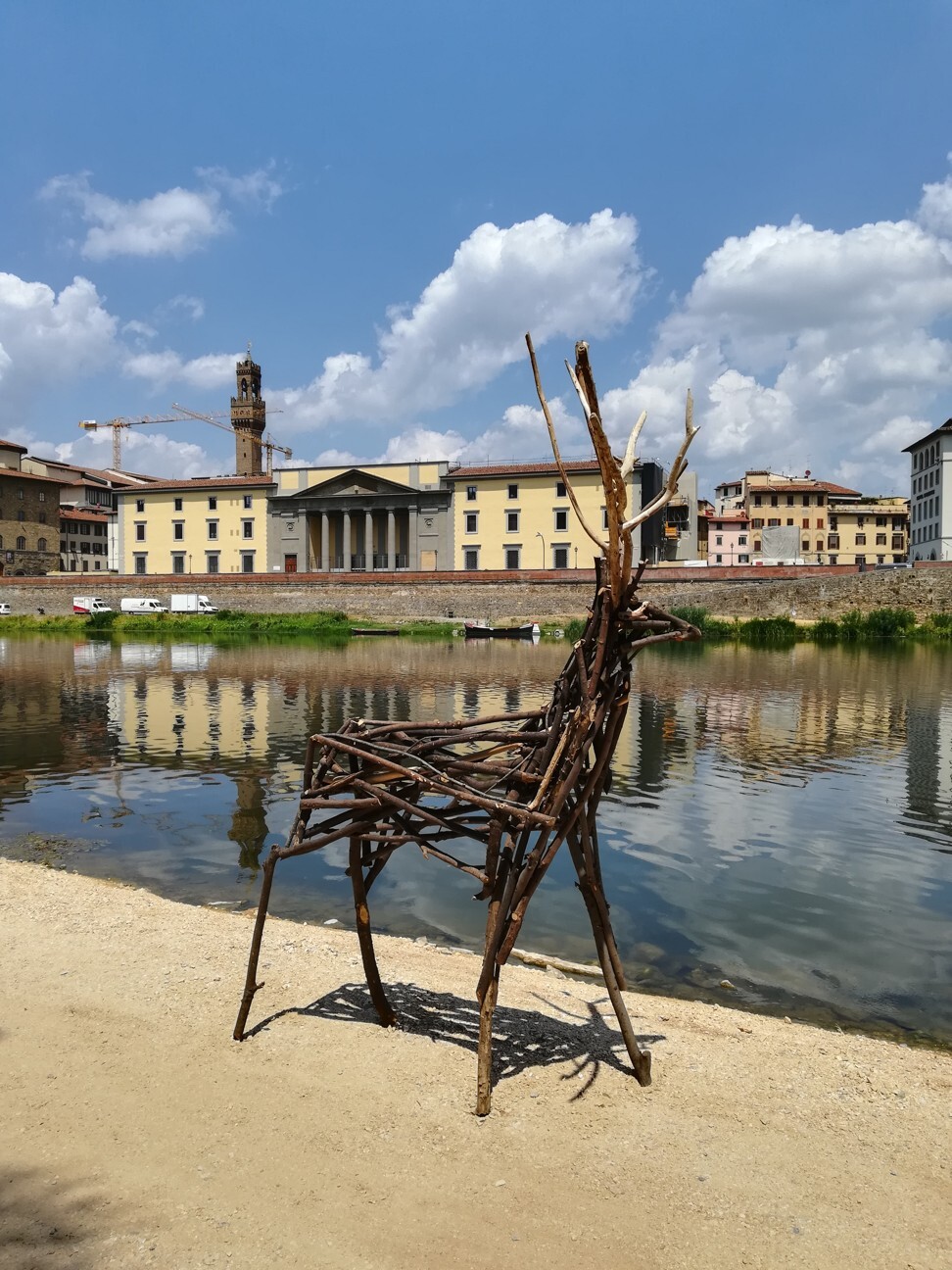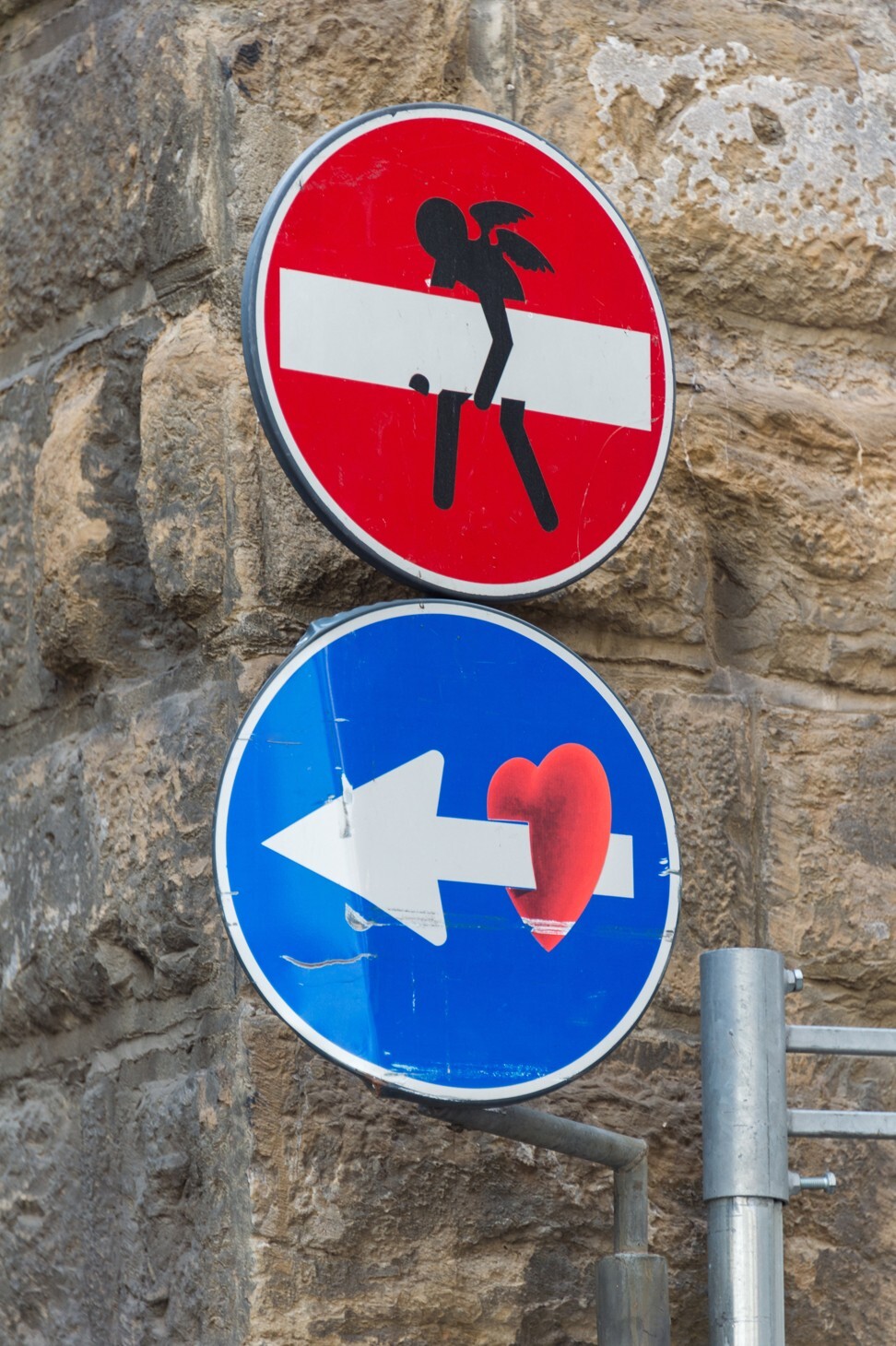Move aside, Michelangelo – modern Florence is all about open air art, as Clet and Blub channel the city’s Renaissance masters in the streets

Florence. The name immediately conjures images of grand de’ Medici palaces, succulent “super Tuscan” wines and sun-dappled hills dotted with 15th-century church spires. The city is the jewel of the Renaissance for having given the world writers Dante and Machiavelli, polymaths Da Vinci and Galileo, artists Caravaggio and Botticelli, and architect Brunelleschi.
Its influence was felt across Europe, and its legacy can be seen in world-famous galleries and museums such as the Palazzo Pitti, the Gallerie degli Uffizi and the Galleria dell’Accademia, home to Michelangelo’s David. Such was the breadth of learning and artistry exhibited by many of the city’s greatest sons and daughters that the phrase “Renaissance man/woman” was coined.
Street art, like any artistic form, is a witness of its time, I believe it will take on an ever deeper meaning in coherence with the environment

But there’s more to Florence’s art scene than just its 500-year-old Renaissance oils and domed cathedrals. Street art is gaining traction in one of the globe’s most historic cities, and anyone interested in Florence’s future would do well to add it to their itinerary when the city opens up again.
“The first thing you’ll find easily, if you have a good look when you’re walking around, are some installations on the street,” says Yan Blusseau, curator of Beast Gallery (Via di Mezzo). “There will be some by Clet or Moradi. Just look around and you’re likely to get curious about it. The artists’ studios themselves are easy to find. Florence is a city of the past in the Unesco centre, but the periphery is quite independent.”
Blusseau is referring to relocated French artist Clet Abraham – or Clet – who’s been making a splash in Florence since he started altering basic street signs. He’s made the familiar white stripe of “Do not enter” into a dog bone, and spun the running schoolchildren into divine admonitions, among dozens of others.

Traditional Florentines may have found it unnerving at first, but eventually his irreverent and engaging work caught the attention of city authorities. In 2012 Clet installed a 12-metre nose on the medieval tower of San Niccolò. Its door became a mouth, its windows became eyes. Later he added L’Uomo Commune (the common man) on the Ponte alle Grazie.
“I’m trying to give an example that it’s possible to make more harmony between authority and freedom,” Clet told CBS News last year. As the artist began to rise in prominence with his work on the street signs of Florence, Turin, Milan and beyond, Blusseau believes that Florentines started to reconsider the unconventional. “They started to think it was possible to include this in the city’s art culture,” says Blusseau.
Street art really started to take off after Blusseau’s 2014 Finestra Con Vista (Window with a View), wherein a mob of 31 artists used doors and windows that were closed off for any number of reasons over the course of the city’s history to create new images. “You have an empty frame, out in the street, and it’s fascinating to use these frames for art. Each [artist] chose a few frames and all started working the same night. It was fantastic.” The result was a unique open-air museum – at least until the unplanned works were removed.

As Blusseau sees it, until recently the public misguidedly conflated street art with graffiti, tagging and vandalism, which gave rise to resistance in a slightly conservative, traditional city less accepting of drastic change than places like Paris or Berlin. “The past is much heavier here,” notes Blusseau. He does, however, believe attitudes are changing, and that the general public is slowly coming to respect the notion that such a contemporary expression of spontaneous, figurative art can indeed enter a dialogue with the city.

Blub’s most recognisable work is L’Arte Sa Nuotare (Art Can Swim), random posters cheekily putting diver’s masks on Botticelli’s Madonna, Michelangelo’s David and the de’ Medicis. The artist’s work is all over Florence and wider Italy, including at LVMH’s luxurious property, the Belmond Villa San Michele in Florence.
In the common areas of the hotel you can find Blub’s recreation of Leonardo da Vinci’s iconic work, which he reinterpreted with a snorkel mask.
“In 2017 we decided to open up the hotel to contemporary forms of art that were emerging in the streets of the city centre.
“This project was designed to breathe new energy into the hotel, and at the same time it strengthens the connection the hotel has with Florentine history and art. Guests find the inclusion of these works very interesting, as it creates a joyful contrast with the historic building (which boasts a facade by Michelangelo),” says Emanuele Manfroi, general manager of the Belmond hotel.

There’s no one district in Florence that curious art lovers should head to in order to see the latest artworks. Manfroi explains that each year there are new street artists who express their ideas and creativity in surprising ways in the streets of Florence city centre (in particular in the San Niccolò and San Frediano neighbourhoods); some works may be taken down by detractors, but then new ones will appear. It’s a continuous process and this is what makes it interesting.
Overall, the street art boom suggests a similar energy to that which powered the Renaissance centuries ago: of creativity, sometimes expressed in a confrontational way, that gains wider acceptance in time. With a studio in Via dell’Olmo, across the river in San Niccolò, Clet is just one example – and there’s also Giovanni de Gara, whose first intervention was the doors of San Miniato al Monte in Eldorato; and Moradi il Sedicente (his studio is in Via delle Caldaie), renowned for his wooden art (such as the deer by the river on the south side of Ponte alla Vittoria), whose work was so appreciated that the city’s governing body eventually commissioned several public works.
“Open your eyes. Look for things that are not ‘normal’. Art can be seen in the vocabulary of the street,” Blusseau recommends. “Wander and be curious. You’ll find something.”
Want more stories like this? Sign up here. Follow STYLE on Facebook, Instagram, YouTube and Twitter .

Once home of Da Vinci, Caravaggio and Botticelli, hotbed of the 15th century artistic Renaissance – modern Florence is about more than the Old Masters, as the Italian city’s storied heritage and world-class museums inspire open-air works by bold trendsetting talents